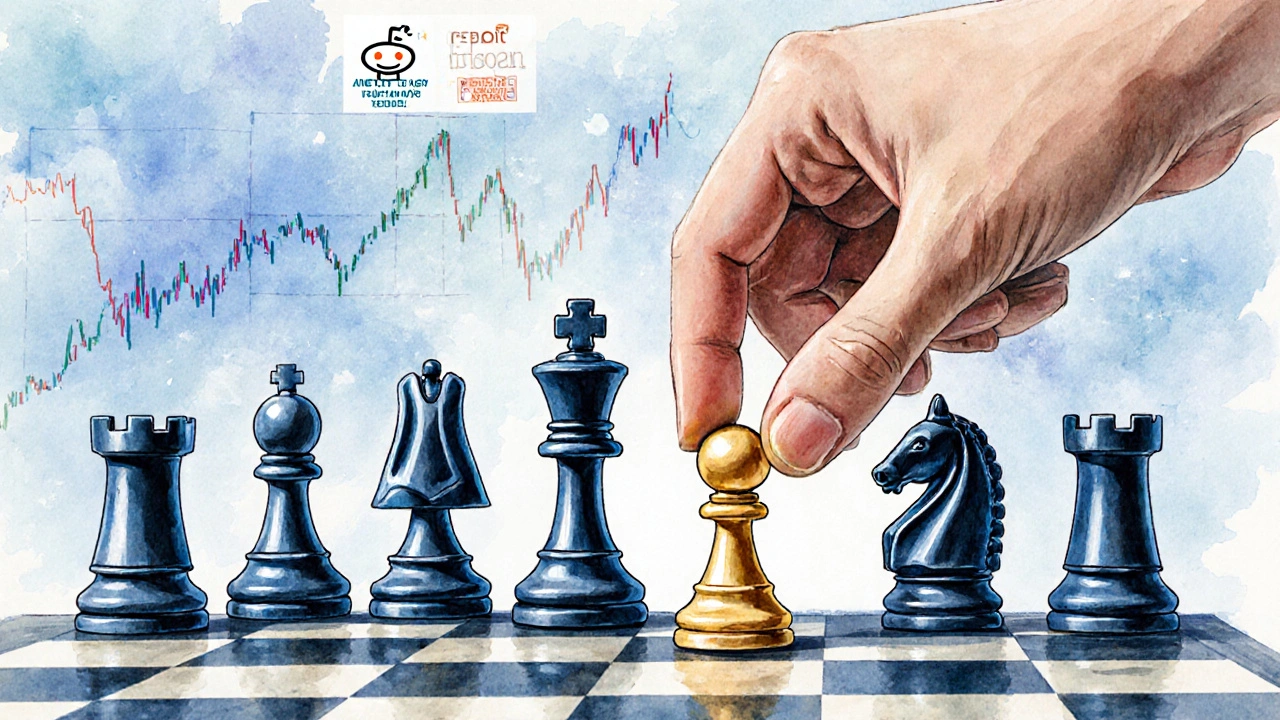Stock trading isn’t just for Wall Street suits in suits. It’s something millions of regular people do every day-from nurses in Texas to teachers in Ohio-logging in after dinner to check their portfolios or placing a quick trade during lunch. But here’s the truth most beginners don’t hear: stock trading isn’t a get-rich-quick scheme. It’s a high-stakes game with real money on the line, and the odds aren’t stacked in your favor unless you know what you’re doing.
What Actually Happens When You Trade Stocks?
When you buy a share of Apple or Tesla, you’re not buying a piece of the company’s building or equipment. You’re buying a tiny slice of ownership-a claim on future profits and voting rights in shareholder meetings. That’s it. The price of that share moves based on what people believe the company will do next. Good earnings? Price goes up. A CEO quits unexpectedly? Price drops. A new competitor shows up? Everyone panics and sells.
Traders try to predict these moves. Some use charts and patterns-this is called technical analysis. Others dig into financial statements, revenue growth, and debt levels-fundamental analysis. A few just follow memes on Reddit. The market doesn’t care which method you use. It only cares if someone else is willing to pay more for your stock tomorrow than you paid today.
The Big Opportunities: Why People Jump In
Let’s be honest: the lure is real. In 2020 and 2021, retail traders made over $1 trillion in paper gains just from buying stocks like GameStop and AMC. Even though most of those gains vanished by 2023, the dream stuck. People saw neighbors, coworkers, or YouTube creators making quick money-and thought, “I can do that.”
The truth? You can make serious money. But it’s not from luck. It’s from discipline. Here’s what works for the people who actually succeed:
- Trading small amounts consistently instead of betting everything on one stock
- Using stop-loss orders to limit damage when a trade goes wrong
- Keeping a trading journal to track what worked and what didn’t
- Sticking to a plan-even when the market is screaming at you to panic
According to a 2024 study by the Securities and Exchange Commission, traders who followed a written strategy were 3.7 times more likely to be profitable over a 12-month period than those who traded on impulse.
The Hidden Risks: What No One Tells You
Most people focus on the upside. But the risks? They’re brutal-and often invisible until it’s too late.
First, there’s leverage. Brokers let you borrow money to trade. Sounds great, right? Until you lose. If you trade with 4:1 leverage and your stock drops 25%, you lose 100% of your money-and still owe the broker. That’s not speculation. That’s debt.
Second, emotional trading. Fear and greed are the two biggest enemies. You see a stock jump 20% in a day. You buy in, hoping to ride the wave. Then it drops 15% the next day. You panic and sell at a loss. Two weeks later, it doubles. That’s not bad luck. That’s psychology. Studies show over 80% of retail traders lose money over time-not because the market is rigged, but because they react emotionally instead of acting strategically.
Third, fees and taxes. Every trade costs money. Even if your broker says “zero commission,” they still make money by selling your order flow to high-frequency firms. And if you sell a stock you held for less than a year? You pay short-term capital gains tax-up to 37% in the U.S. That eats into profits fast.

Day Trading vs. Swing Trading: Which One Fits You?
Not all trading is the same. Two common styles:
- Day trading: Buying and selling within the same day. No positions held overnight. Requires constant screen time, quick decisions, and nerves of steel. Only about 10% of day traders consistently make money. The rest burn out or lose money.
- Swing trading: Holding stocks for days or weeks. You’re riding short-term trends, not fighting the daily noise. Less stressful. More time for research. Better for people with full-time jobs.
If you work 9-to-5, swing trading is far more realistic. You don’t need to stare at a screen all day. You just need to check your positions once in the morning and once at night. And you can avoid the emotional rollercoaster of minute-by-minute price swings.
Tools and Platforms: What You Actually Need
You don’t need fancy software to start. Most beginners do fine with free platforms like:
- Robinhood (simple, no fees, limited research tools)
- Webull (free trades, better charts, real-time data)
- TD Ameritrade (thinkorswim platform-powerful for serious traders)
What matters more than the platform? Your access to data. Free tools like Yahoo Finance and Finviz give you earnings calendars, insider trading reports, and sector performance. You don’t need to pay $300/month for Bloomberg Terminal to get started.
And here’s a pro tip: Use paper trading apps-like TradingView’s simulated account-to test your strategy with fake money for at least three months before risking real cash.

How to Start Without Losing Everything
Here’s a simple, no-nonsense plan for beginners:
- Start with $500. Not $5,000. Not your rent money. $500.
- Trade only one or two stocks at first. Learn how they behave. Watch how news affects them.
- Set a 5% stop-loss on every trade. If it drops 5%, you sell. No exceptions.
- Only risk 1% of your account on any single trade. That means with $500, you’re risking $5 per trade.
- Write down why you’re making each trade. “I bought NVDA because earnings beat estimates and GPU demand is rising.” Not “I felt lucky.”
- Review your trades every Sunday. What worked? What didn’t? Adjust.
This isn’t glamorous. But it’s how real traders survive.
When to Walk Away
Not everyone should trade stocks. If any of these sound like you, maybe it’s not the right path:
- You’re trying to pay off credit card debt
- You’re trading to replace your salary
- You feel anxious every time you check your phone
- You’ve lost money and keep doubling down to “get it back”
Stock trading isn’t a solution to financial problems. It’s a tool for people who already have a solid financial foundation: emergency fund, no high-interest debt, and a steady income. If you don’t have that, focus on building it first. Then come back to trading.
What Comes Next?
If you’ve made it this far, you’re already ahead of 90% of people who start trading. The market doesn’t reward speed or guts. It rewards patience, consistency, and self-awareness.
Next steps? Read one book: The Psychology of Trading by Brett Steenbarger. Then open a paper trading account. Trade for 90 days. Track every decision. See how you react under pressure. If you’re still excited after that, you might be ready to trade with real money.
But if you’re tired of the noise? That’s okay too. Index funds and ETFs are still the best way for most people to build wealth over time. Trading isn’t the only path. It’s just one path-and it’s not for everyone.
Is stock trading gambling?
It can be-if you’re guessing without a plan. But trading with research, risk management, and a clear strategy is more like playing chess than rolling dice. The difference is preparation. Gamblers rely on luck. Traders rely on patterns, data, and discipline.
Can you make a living from stock trading?
Yes, but it’s rare. Less than 5% of retail traders consistently make enough to replace a full-time salary. Those who do usually trade full-time, have years of experience, and treat it like a business-not a hobby. Most people who try to quit their jobs to trade end up broke or back at work within a year.
How much money do I need to start trading stocks?
You can start with as little as $50. But to trade safely and meaningfully, aim for at least $500. That lets you diversify slightly, use stop-losses without being wiped out by one bad trade, and absorb small losses without panic. Never trade with money you can’t afford to lose.
Are day traders always losing money?
Most are. Studies from the SEC and academic journals show that 70-80% of day traders lose money over time. The ones who win are usually former professionals, have access to real-time data feeds, and trade with institutional-grade tools. For most people, day trading is a fast way to lose savings-not build wealth.
Should I use leverage in stock trading?
Avoid it as a beginner. Leverage multiplies both gains and losses. A 10% move against you with 3:1 leverage means you lose 30% of your account. Many brokers let you borrow money, but that doesn’t mean you should. The risk of margin calls and forced liquidations isn’t worth the potential reward unless you’re highly experienced.
What’s the biggest mistake new traders make?
They treat trading like a lottery. They chase hot stocks, ignore risk management, and don’t track their performance. The most successful traders don’t have the best predictions-they have the best systems. They know when to walk away, how to cut losses, and how to stick to their plan-even when emotions scream otherwise.


